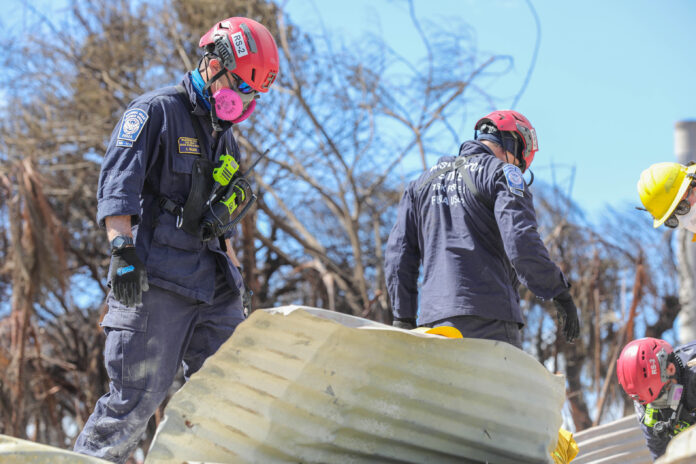In August 2023, the Center for Climate and Security’s Military Responses to Climate Hazards (MiRCH) tracker identified 19 countries in which militaries were deployed in response to climate hazards, often multiple times to different regions and types of hazard. The tracker identified 35 incidents total.
In the United States, the devastating wildfire in Maui resulted in one of the largest military deployments in response to a single hazard in recent years, which the military has sustained for more than a month. The disaster was the most lethal U.S. wildfire in a century, exceeding the annual deaths from terrorism in the United States in any year since 9/11. The fires prompted the creation of a U.S. Department of Defense task force to coordinate contributions from all U.S. armed forces branches and the National Guard, which have totaled nearly 600 personnel. In support of FEMA, the task force has provided relief services including water and fuel distribution, search and recovery, air and sea transportation, mortuary and forensic services, and facility usage.
The crisis has attracted disinformation as well, such as a false claim that the military had arrested the head of FEMA in the wake of the disaster, Chinese government disinformation that the fires were caused by a U.S. “weather weapon,” and Russian claims that U.S. aid to Ukraine had undermined wildfire response.
The Maui wildfire underscored the fact that militaries are responding to hazards that reflect not only climate change, but broader ecological disruption as well. The fires were likely more destructive because of invasive species (an example of a biotic eruption) and insufficient environmental management. Grasses intentionally introduced in the late 1700s likely contributed to the fires through the buildup of flammable biomass in abandoned post-agricultural lands, which also spread into populated communities. There were many warnings about the risks posed by these invasive grasses prior to the fire, but lack of regulation, resources and urgency confounded efforts to reduce the grasses’ density and to exclude them from populated areas. Further, on Maui, decades of water diversion from streams supporting agriculture and development contributed to a drying of the land, increasing fire risk.
Meanwhile, responses to severe climate hazards prompted thorny political questions. In Canada, the Canadian Armed Forces (CAF) continued to assist firefighting and evacuations in British Columbia and the Northwest Territories. The summer’s extreme weather prompted one retired Canadian military leader to call for a new national emergency response agency to minimize the burden on the CAF. In China in early August, thousands of People’s Liberation Army and People’s Armed Police personnel conducted evacuations during flooding from the landfall of Typhoon Doksuri, and a decision to divert flood waters to parts of Hebei Province to protect Beijing prompted anger at the government. (For more on the dynamics in China, see the Center for Climate and Security’s analysis).
Elsewhere, climate-driven hazards led neighbors to help neighbors, both in the United States and internationally. A wildfire in Louisiana drew in National Guard troops from as far away as Minnesota, while the European Union (EU) Civil Protection Mechanism was activated for the second time this summer in Greece in response to wildfires. Many countries that deploy in support of the mechanism do so via their militaries, especially smaller countries like Croatia. According to the European Commission, the August fires in Greece were the largest fires ever seen in the EU.





